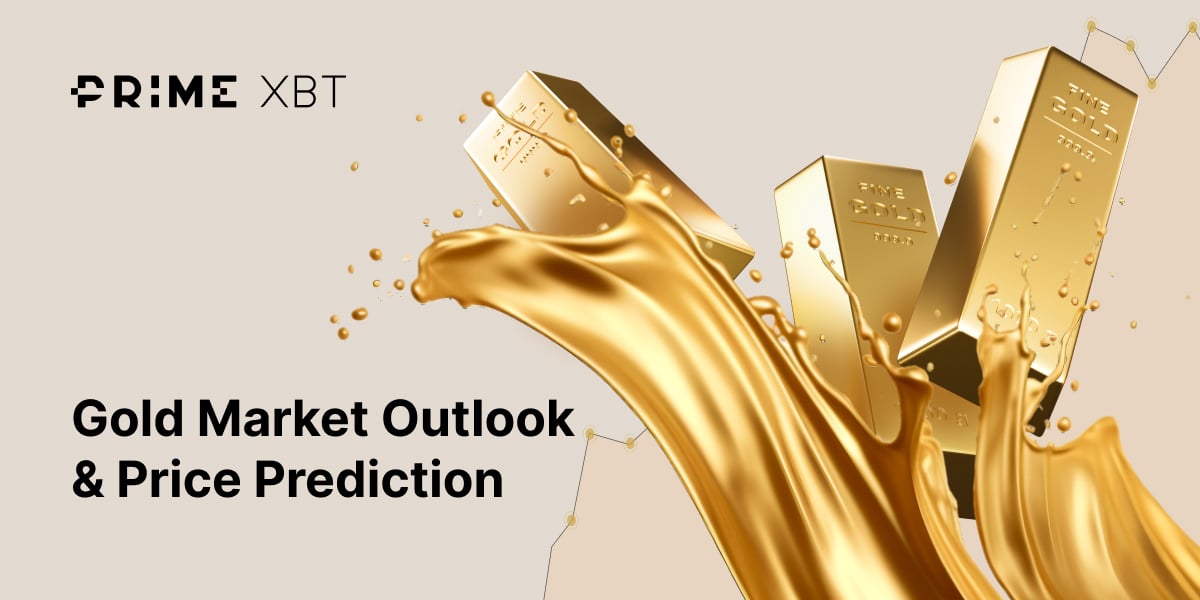Building a Cryptocurrency portfolio can help you take advantage of the price movements of multiple Crypto markets. It can also help manage your risk more effectively since you won’t be dependent on a single Cryptocurrency’s price fluctuations.
In very simple terms, a portfolio is a collection of various digital assets that you strategically choose to give you the best return on your initial investment.
Another benefit of a Cryptocurrency portfolio is that there are tools available called Crypto portfolio trackers, that can give you price alerts and other asset tracking solutions.
If you are looking for effective Crypto investment strategies or are ready to evolve your Cryptocurrency trading strategy, then building a portfolio of Crypto assets might be the most effective way to go about it.
Key takeaways
- A Cryptocurrency portfolio is a collection of multiple digital assets, which help traders take advantage of Crypto asset price movements without being exposed to only one
- There are tools that help Crypto portfolio investors track multiple assets, either ones in their portfolios or ones that are looking to add to their portfolios
- Portfolio investing also minimises exposure when a single asset moves erratically or negatively
Understanding the essence of a balanced Crypto portfolio

As most traders know there are the three “big” Cryptos. The “big” comes from their market caps, and as most know, they are Bitcoin and Ethereum, with Tether coming in a far third.
These are high-value coins – Bitcoin at the time of writing is at $50,000, well below the all-time high of almost $70,000. Even though Bitcoin and Ethereum are likely to grow further in the future, they might not see the high growth of smaller and new altcoins.
Where do altcoins fit into a Crypto investment strategy?
Of course these smaller altcoins have a higher risk tolerance. But the stability of having both the Big Three and these smaller Crypto tokens, can balance out the risk profile, without missing out on the huge potential gains these smaller coins can experience.
In traditional investing, there are ratios of various asset classes you should hold. A balanced portfolio for example can hold 40-60% Stocks or fiat currency (which are more volatile) and the remaining percentage in bonds (which are more stable but see lower returns).
In some cases, when interest rates are low, you may not see any returns after calculating for transaction fees. That’s where Stocks come in, which generally increase in value rapidly when the economy is healthy and interest rates are low.
As the Crypto market has matured, market experts have seen similar dynamics develop. The biggest coins by market cap act very similarly to Stocks, i.e. see big positive movements when the economy is well, pulling up many of the smaller cap coins.
When the economy is contracting the big coins may hold their value better, while people may sell off their smaller coins.
Step 1: define your investment goals and risk tolerance
No matter what market you are looking to invest in, or type of investing you want to do, including building a Crypto portfolio, you need a strategy.
This will help you define your risk appetite and your financial goals. Before jumping in and signing up for multiple exchanges, here are some questions you can ask yourself.
Questions you should ask yourself before making Crypto investments
- How much do I have to invest after all my living costs are covered?
- What is my profit target as a percentage of my portfolio?
- How much am I comfortable risking for the profit target defined?
Outline your financial objectives
The Crypto market moves much more rapidly than other asset classes. This means that your Crypto portfolio has the potential to yield a bigger return than other assets that are held in a portfolio, like Stocks and bonds for example.
The risk to reward ratio
Also, as mentioned previously, there are Cryptos that move more than others but carry more risk. The best Crypto portfolio balances returns and stability, targeting too much profit increases your risk.
On the other hand, going for Cryptos that are too stable may hold their value but they won’t help you make a profit.
That’s why your goals should be balanced and reasonable, balancing risk with profit potential.
Assess your risk tolerance
As the saying goes “big risk, big reward”….that’s a great saying when you’re entertaining yourself, but if you are trying to build wealth and grow your Crypto portfolio maybe “measured risk, reasonable rewards” is more appropriate.
Diversify according to your risk appetite
Going big and putting all your eggs in one basket is the opposite of what a Crypto portfolio is built for. It should be built to achieve balanced rewards, without surpassing a predefined risk level.
Additionally, a good Crypto portfolio is built to balance more active assets and less active ones, to take full advantage of all price movements.
In traditional investing keeping a 60% to 40% ratio of more stable to more active (volatile) assets is recommended.
Of course this can be adjusted depending on what you’d like your Crypto portfolio to achieve. Do you want long term growth, which is not dependent on taking higher risk positions? Or do you want to grow your Crypto portfolio in a shorter amount of time?
Step 2: choosing the right Cryptocurrencies for your strategy

The so called “Big Three” Cryptos, Bitcoin, Ethereum and Tether, the biggest by market cap, move in much more predictable ways. You will see support and resistance pushing and pulling at the price as the price of these coins approach certain levels.
The Big Three vs. smaller cap coins
Smaller coins on the hand can experience more impressive price increases, but are also subject to unpredictable price drops, and even delisting (this is when a coin is removed from one or multiple exchanges).
A good Crypto portfolio tracker will likely alert you if one of the tokens in your account is about to be delisted or has been delisted.
Although delisting doesn’t necessary mean that the value of the coin will go to zero, it can not be bought or sold on an exchange.
Using a Cryptocurrency heatmap alongside a Crypto portfolio tracker can help you make a more data-driven decision as to which Cryptocurrencies would work best in your Cryptocurrency portfolio.
Choosing Cryptocurrencies that align with your strategy
Is your goal to grow your Crypto portfolio over a longer period of time or to add to other investments you currently have?
Are you investing in more traditional assets and looking for more aggressive ones to cover that gap? Or are you looking to create a complete Crypto portfolio with both fast movers and stable growers?
What type of investor are you?
Are you all about the technical analysis or completely a fundamentals investor? Or do you believe equally in both? These are questions you must ask yourself when trying to build the best Crypto portfolio possible.
Intrinsic vs. market value
You might be more practical and you need to see value in what you are investing in. Tokens like ETH are not only used as Cryptocurrencies but also to fuel transactions on the Ethereum network.
This means that ETH should hold a base value as long as there are users of the Ethereum network.
Solana is another smart contract-enabled network that uses SOL for transactions made on the network’s blockchain.
The benefit of both Ethereum and Solana is that they carry what is called intrinsic value. In simple terms, it’s real value, not perceived, because it’s used for a specific reason. So, it is a very unlikely scenario that they will go to absolute zero.
On the other hand, this can also be a disadvantage because both the network and the users seek to keep the token that powers transactions at a reasonable price.
If the token becomes too expensive, so will the transactions on the network, making it less competitive than its counterparts.
Tokens that are just used as speculative assets and digital currencies can be subject to market trends and sentiment. This can cause prices to increase without any true fundamentals backing these movements.
Although they can see huge gains in a short amount of time, they can also be subject to unpredictable drops. They definitely have a place in a well rounded Crypto portfolio, they should be treated as more volatile assets.
What are stablecoins and how do they fit into your investment strategy?

Stablecoins are yet another category of Cryptocurrency that you should consider. If you’re unfamiliar, stablecoins are tokens that have a value “pegged” (anchored) to a different asset, usually a fiat currency or Commodity (such as Gold).
As the name implies, these are some of the most stable Cryptos, which may yield conservative but stable and predictable returns. The most popular and biggest stablecoin at the moment is Tether (USDT).
If you want to keep risk lower, go with the Big Three or stable-coins; if you want rapid but unpredictable growth, go with alt-coins; if you want a more balanced approach, go with the 60/40 rule or even a 50/30/20 distribution (fifty percent low risk, thirty medium risk and twenty higher risk assets).
Diversify your portfolio
A diversified Crypto portfolio can help you average out risk, take advantage of market trends that affect multiple coins and optimize your portfolio’s ability to turn a profit.
A well diversified portfolio leverages relationships amongst various Cryptocurrencies, some of which even affected by mainstream markets outside the “Crypto-sphere”.
Balancing your asset allocation
Think about it like playing Jenga, your objective is for the tower to stay upright and it to continue going upwards. Obviously when you remove something on one side, you’ll have to stack that block on the opposite side to keep an equilibrium.
So when you add a volatile Crypto to your portfolio, it would be a good idea to also add an equivalent Crypto that is more stable or that moves inversely to the one you chose.
Different Cryptos for different strategies
Tapping into different types of Cryptos with different underlying technologies and protocols can also help diversify your portfolio in different ways. This can include coins that use DeFi protocols, large cap coins, networks with a million users that use a specific token as its method of payment and reward, and coins pegged to other assets.
A powerful Crypto portfolio tracker can help you decide which Cryptos to add, remove or increase your investment in.
Step 3: allocate your investments strategically
A robust Crypto portfolio tracker can help you with your Crypto portfolio allocation strategy. The best Crypto portfolio tracker may help you with Crypto tax reporting, give you a detailed look at your Crypto transactions, offer comprehensive market analysis, and give you holistic portfolio data of all of your investments and assets.
Set clear allocation guidelines
As mentioned previously, your portfolio should be a diverse collection of fast movers and stable growers. This will help you avoid any direct exposure to a single coin’s or market’s fluctuations.
If you build your portfolio correctly, you can use inter-asset correlations (i.e. relationships between certain coins and markets) to your advantage so that you can average out risk across multiple markets.
Additionally, your more stable and predictably growing Crypto gains should counterbalance any risk you take on with smaller, more volatile coins since you will have a bigger percentage of these stable investments.
Your portfolio performance should reflect this when market trends move against smaller coins.
Consider your investment horizon
In traditional financial services or Crypto markets, having an investment horizon or the timeframe within you’d like to hold your assets – long term, middle term or short term – is important for a solid strategy.
You can use the dollar cost averaging strategy to allocate a certain and relatively conservative amount of funds at regular intervals, no matter the price. To make it simpler:
Say you’ve decided you can afford to invest up to $200 every month. You buy Solana at $115, the next month at $110, the month after that $119, then $105. If you average the prices ($115 + $110 + $119 + $105) /4 = $109.75.
So even though two months into this four-month cycle you paid significantly more, the overall price you paid was closer to the lowest price during that period. Now if you were to project that over 12 months you can understand how significant your potential savings would be.
Step 4: regularly monitor and rebalance Your portfolio
Using a Crypto portfolio tracker that sends you price alerts and updates on your portfolio performance can help you reevaluate and adjust depending on the current market conditions and the composition of your portfolio.
Implement portfolio tracking
Crypto portfolio trackers have a really long list of features they can offer. Some give you in-depth market analysis and price alerts and others can show you an overall picture of all your assets.
Rebalance as necessary
Portfolio tracking extends well beyond simply looking at the performance of your assets. It also involves “rebalancing” your collection of investments, Crypto or otherwise. Markets are always moving and dynamics are always changing.
Tether, for example, wasn’t always considered a contender to Bitcoin and Ethereum. Today multiple exchanges offer Tether and it is one of the biggest altcoins by market capitalisation.
Conclusion
As Cryptos have matured into valid investment vehicles, and stores of wealth, Crypto portfolio trackers have made building and managing your Crypto investments simpler.
Building a well-balanced portfolio can help you take advantage of price movements across multiple Crypto trends, while also protecting your investments by averaging out risk.
How do I start a Crypto portfolio?
You should define your investment horizon, your risk tolerance and your performance goals.
How many Cryptocurrencies should I have in my portfolio?
That is entirely up to you, following your own strategy and objectives of course.
How do I manage my crypto portfolio?
Crypto portfolio trackers are a great way to review your portfolio's performance.
Risk warning: Our products are complex financial instruments which come with a high risk of losing money rapidly due to leverage. These products are not suitable for all investors. You should consider whether you understand how leveraged products work and whether you can afford to take the inherently high risk of losing your money. If you do not understand the risks involved, or if you have any questions regarding our products, you should seek independent financial and/or legal advice if necessary. Past performance of a financial product does not prejudge in any way their future performance.




